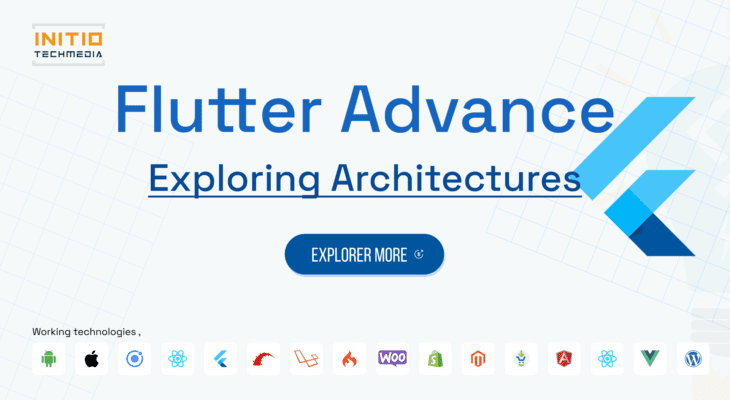Leading Mobile & web Development company which is providing Ready to publish apps & on demands application in Global Bussiness.
- 908, B Square 2, Ambli Rd, near Hotel Double tree Hilton, Vikram NagarAhmedabad-380054, Gujarat, India
- (+91) 8758432204Give us a call
- contact@initiotechmedia.com24/7 online support

Choosing the Right Architecture for Your Flutter App: A Comprehensive Guide
- payal patel
- March 22, 2023
- 0
Flutter is built on Dart, a modern programming language that is easy to learn and use. Flutter provides a rich set of widgets and tools that make it easy to develop beautiful and functional mobile applications. However, choosing the best architecture for your Flutter app can be challenging. In this blog post, we will discuss the best architecture for Flutter development.
Flutter follows the Model-View-Controller (MVC) architecture by default, but developers can use different architectural patterns based on their app requirements. Here are some of the most popular architectural patterns for Flutter development:
1.Flutter Bloc:
Flutter Bloc is a state management library that uses the Business Logic Component (BLoC) pattern. This architecture separates the business logic from the UI, making it easier to test and maintain the code. It also provides a clear separation of concerns, making the code more manageable and scalable.
Flutter Bloc uses streams to manage the state of the app, which makes it easy to implement asynchronous programming. It also provides a clean API that makes it easy to use and understand. Flutter Bloc is a popular choice for developers who want to build complex apps that require state management.
2. Provider:
Provider is another popular state management library for Flutter. It uses the InheritedWidget concept to provide data to the widgets in the app. Provider is a simple and easy-to-use library that makes it easy to manage the state of the app.
Provider provides a clean API that makes it easy to use and understand. It also supports lazy loading of data, making it a great choice for apps that require data loading from external sources. Provider is a good choice for small to medium-sized apps that require simple state management.
3.Flutter Redux:
Flutter Redux is a state management library that uses the Redux architecture pattern. Redux is a popular architecture pattern used in web development, and it has been adapted for use in mobile app development with Flutter.
Flutter Redux provides a clear separation of concerns between the UI and business logic, making the code more manageable and scalable. It also provides a clean API that makes it easy to use and understand. Flutter Redux is a good choice for developers who want to build complex apps that require state management.
4.MVVM:
The MVVM (Model-View-ViewModel) architecture pattern is another popular choice for Flutter development. It separates the business logic from the UI, making the code more manageable and scalable. MVVM provides a clear separation of concerns, making it easy to maintain and test the code.
MVVM also makes it easy to implement data binding between the UI and the ViewModel. This allows changes in the ViewModel to be automatically reflected in the UI, making the code more responsive and user-friendly. MVVM is a good choice for apps that require complex data binding and state management.
Conclusion:
In conclusion, the best architecture for Flutter development depends on the specific requirements of your app. Flutter Bloc, Provider, Flutter Redux, and MVVM are all good choices depending on your needs. Each architecture has its own advantages and disadvantages, so it is important to choose the one that best fits your project. By choosing the right architecture, you can build scalable, maintainable, and user-friendly apps with Flutter.
WhatsApp us

